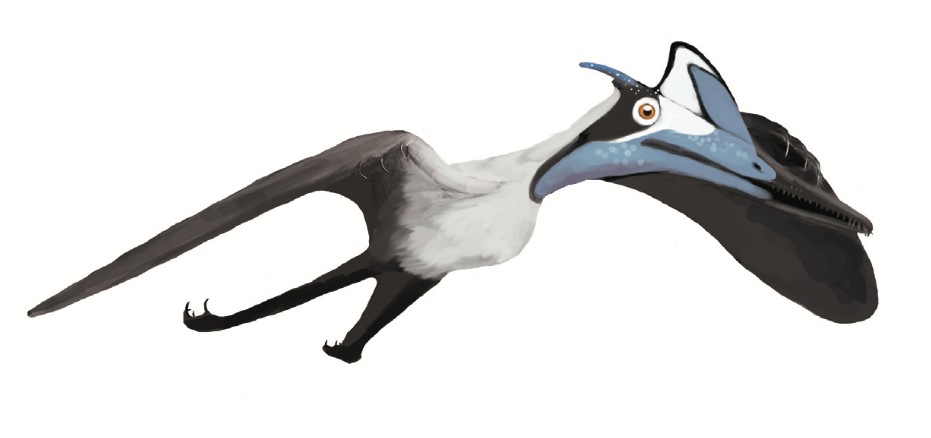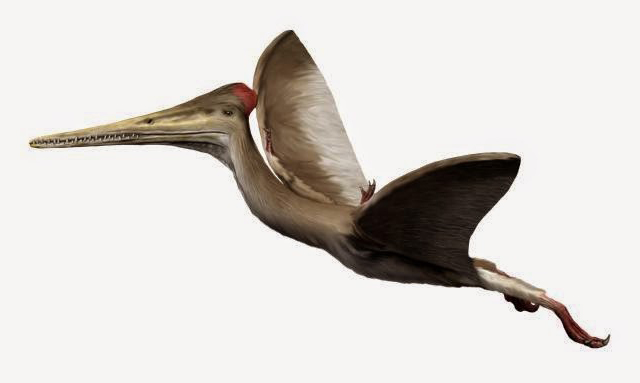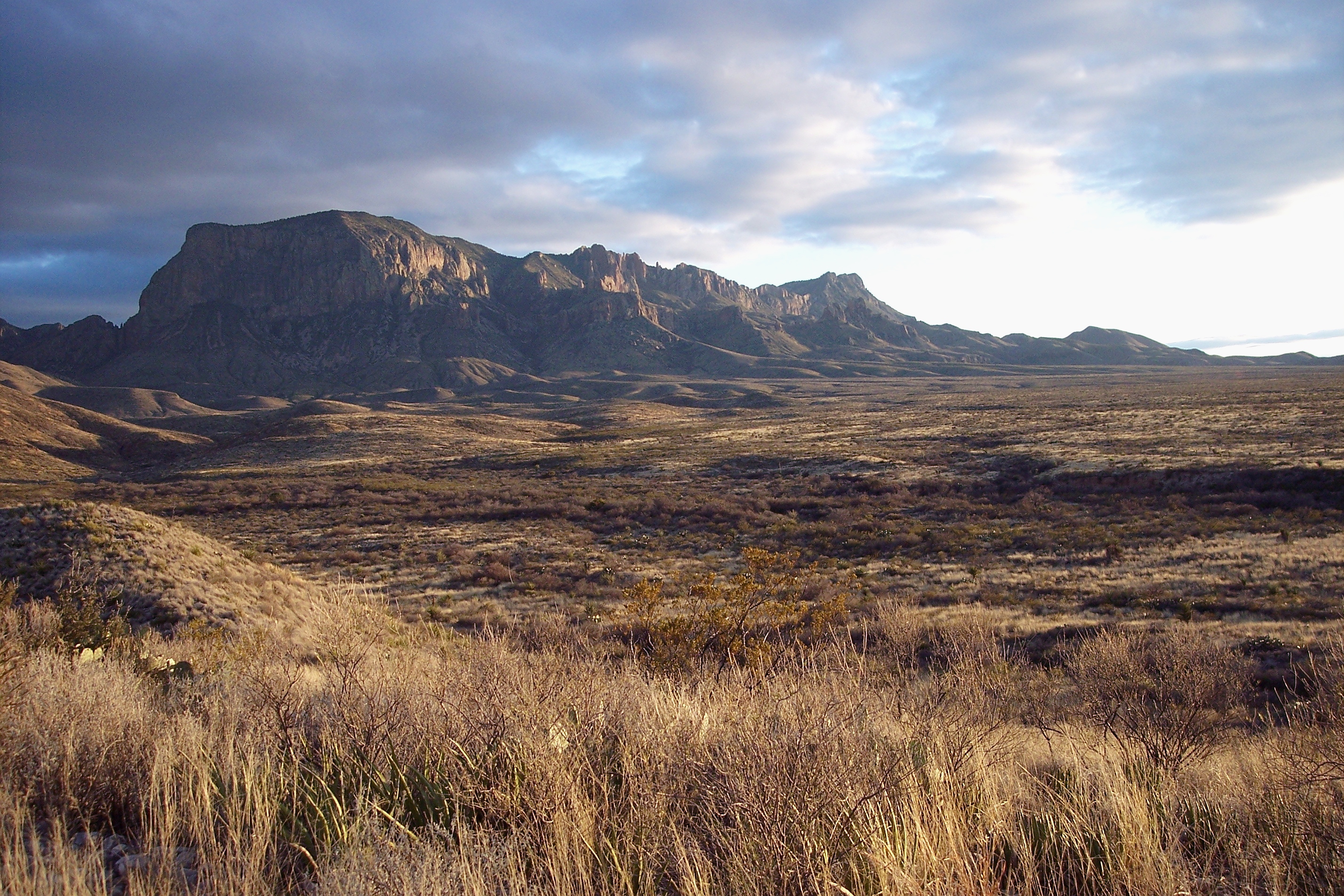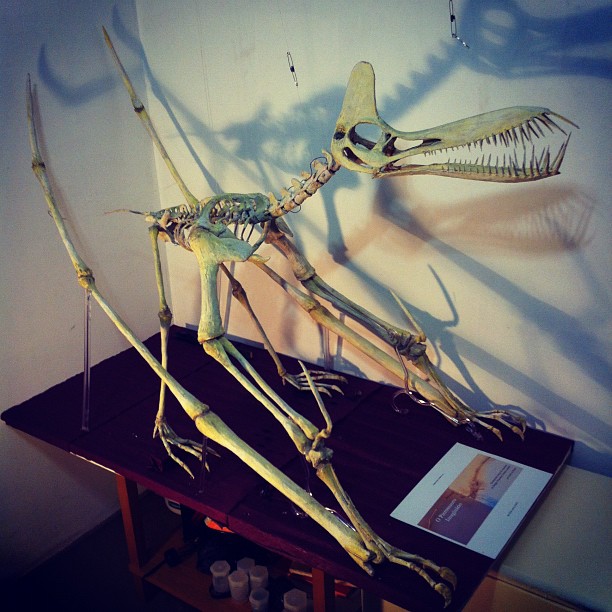|
Pterodactyloidea
Pterodactyloidea ( ; derived from the Greek words ''πτερόν'' (''pterón'', for usual ''ptéryx'') "wing", and ''δάκτυλος'' (''dáktylos'') "finger") is one of the two traditional suborders of pterosaurs ("wing lizards"), and contains the most derived members of this group of flying reptiles. They appeared during the middle Jurassic Period, and differ from the basal (though paraphyletic) rhamphorhynchoids by their short tails and long wing metacarpals (hand bones). The most advanced forms also lack teeth, and by the late Cretaceous, all known pterodactyloids were toothless. Many species had well-developed crests on the skull, a form of display taken to extremes in giant-crested forms like '' Nyctosaurus'' and '' Tupandactylus''. Pterodactyloids were the last surviving pterosaurs when the order became extinct at the end of the Cretaceous Period, together with the non-avian dinosaurs and most marine reptiles. " Pterodactyl" is also a common term for pterodactyloid pte ... [...More Info...] [...Related Items...] OR: [Wikipedia] [Google] [Baidu] |
Pterosaur
Pterosaurs are an extinct clade of flying reptiles in the order Pterosauria. They existed during most of the Mesozoic: from the Late Triassic to the end of the Cretaceous (228 million to 66 million years ago). Pterosaurs are the earliest vertebrates known to have evolved powered flight. Their wings were formed by a membrane of skin, muscle, and other tissues stretching from the ankles to a dramatically lengthened fourth finger. There were two major types of pterosaurs. Basal pterosaurs (also called 'non-pterodactyloid pterosaurs' or ' rhamphorhynchoids') were smaller animals with fully toothed jaws and, typically, long tails. Their wide wing membranes probably included and connected the hind legs. On the ground, they would have had an awkward sprawling posture, but the anatomy of their joints and strong claws would have made them effective climbers, and some may have even lived in trees. Basal pterosaurs were insectivores or predators of small vertebrates. Later pte ... [...More Info...] [...Related Items...] OR: [Wikipedia] [Google] [Baidu] |
Anhanguera (pterosaur)
''Anhanguera'' () is a genus of Pterodactyloidea, pterodactyloid pterosaur known from the Early Cretaceous (Albian age, 112 to 100 million years ago) Romualdo Formation of Brazil (precisely in Araripe Basin) and the Late Cretaceous (Cenomanian age, 98 to 93 million years ago) Kem Kem Group of Morocco. This pterosaur is closely related to ''Ornithocheirus'', but belongs in the family Anhangueridae.Campos, D. de A., and Kellner, A. W. (1985). "Um novo exemplar de ''Anhanguera blittersdorffi'' (Reptilia, Pterosauria) da formação Santana, Cretaceo Inferior do Nordeste do Brasil." In Congresso Brasileiro de Paleontologia, Rio de Janeiro, Resumos, p. 13. The generic name comes from the Tupi language, Tupi words ''añanga'', meaning "spirit protector of the animals" + ''wera'' "bygone". Description ''Anhanguera'' was a fish-eating animal with a wingspan of about .Aureliano, T., Ghilardi, A. M., Duque, R. R., & Barreto, A. M. (2014). ON THE OCCURRENCE OF PTEROSAURIA IN EXU, PERNAMBU ... [...More Info...] [...Related Items...] OR: [Wikipedia] [Google] [Baidu] |
Azhdarchoidea
Azhdarchoidea ( , meaning "azhdarchid-like forms") is a group of pterosaurs within the suborder Pterodactyloidea. Pterosaurs belonging to this group lived throughout the Early and Late Cretaceous periods, with one tentative member, '' Tendaguripterus'', that lived in the Late Jurassic period. Remains of this group have been found in the Americas, Africa, and Eurasia, suggesting that they probably had a global distribution. Azhdarchoids are generally distinguished from other pterodactyloids by their relatively low arm-to-leg-length ratio, suggesting that they were more proficient in moving on the ground than pterosaurs like ''Pteranodon'' or '' Anhanguera'' (which had very long arms relative to the length of their legs). This has led some researchers to suggest that many azhdarchoids, such as the azhdarchids and dsungaripterids, may have been primarily terrestrial, while retaining the ability to fly when necessary. Classification Azhdarchoidea was named by paleontologist David ... [...More Info...] [...Related Items...] OR: [Wikipedia] [Google] [Baidu] |
Kryptodrakon
''Kryptodrakon'' is an extinct genus of pterodactyloid pterosaur from the Middle to Late Jurassic with an age of approximately 162.7 million years. It is known from a single type species, ''Kryptodrakon progenitor''. The age of its fossil remains made ''Kryptodrakon'' the basalmost and oldest pterodactyloid known to date. Discovery and naming In 2001, pterosaur bones were discovered in Xinjiang by Chris Sloan. The bones were first identified as those of a theropod; paleontologist James Clark later recognized their pterosaurian nature. In 2014, Brian Andres, Clark and Xu Xing named and described the type species ''Kryptodrakon progenitor''. The generic name means ''hidden dragon'' from Greek κρυπτός, ''kryptos'' (''hidden''), and δράκων, ''drakon'' (''dragon''). The name alludes to the film '' Crouching Tiger, Hidden Dragon,'' which included some scenes filmed near the type locality. The specific name ''progenitor'' means ''ancestor'' or ''founder of a family ... [...More Info...] [...Related Items...] OR: [Wikipedia] [Google] [Baidu] |
Archaeopterodactyloidea
Archaeopterodactyloidea (meaning "ancient Pterodactyloidea") is an extinct clade of pterodactyloid pterosaurs that lived from the middle Late Jurassic to the latest Early Cretaceous periods (Kimmeridgian to Albian stages) of Africa, Asia, Europe and North America. It was named by Alexander Wilhelm Armin Kellner in 1996 as the group that contains ''Germanodactylus'', ''Pterodactylus'', the Ctenochasmatidae and the Gallodactylidae. The earliest known archaeopterodactyloid remains date to the Late Jurassic Kimmeridgian age. Previously, a fossil jaw recovered from the Middle Jurassic Stonesfield Slate formation in the United Kingdom, was considered the oldest known. This specimen supposedly represented a member of the family Ctenochasmatidae, though further examination suggested it belonged to a teleosaurid crocodylomorph instead of a pterosaur. Anatomy Many archaeopterodactyloids had very distinctive features in comparison to other pterosaurs, including the shape of their jaws, a ... [...More Info...] [...Related Items...] OR: [Wikipedia] [Google] [Baidu] |
Quetzalcoatlus
''Quetzalcoatlus'' () is a genus of azhdarchid pterosaur that lived during the Maastrichtian age of the Late Cretaceous in North America. The Type (biology), type specimen, recovered in 1971 from the Javelina Formation of Texas, United States, consists of several wing fragments and was species description, described as ''Quetzalcoatlus northropi'' in 1975 by Douglas A. Lawson, Douglas Lawson. The Generic name (biology), first part of the name refers to the Aztec serpent god of the sky, Quetzalcōātl, while the specific name, second part honors Jack Northrop, designer of a flying wing, tailless fixed-wing aircraft. The remains of a second species were found between 1972 and 1974, also by Lawson, around from the ''Q. northropi'' locality. In 2021, these remains were assigned to the name ''Quetzalcoatlus lawsoni'' by Brian Andres and (posthumously) Wann Langston Jr., Wann Langston Jr, as part of a series of publications on the genus. ''Quetzalcoatlus northropi'' has gained fame a ... [...More Info...] [...Related Items...] OR: [Wikipedia] [Google] [Baidu] |
Germanodactylus
''Germanodactylus'' ("German finger") is a genus of germanodactylid pterodactyloidea, pterodactyloid pterosaur from Upper Jurassic-age rocks of Germany, including the Solnhofen Limestone. Its specimens were long thought to pertain to ''Pterodactylus''. The head crest of ''Germanodactylus'' is a distinctive feature. History ''G. cristatus'' is holotype, based on specimen BSP 1892.IV.1, from the Solnhofen limestone of Eichstätt, Germany. It was originally described by Plieninger in 1901 as a specimen of ''Pterodactylus kochi'', and was given its current specific name (zoology), specific name by Carl Wiman in 1925, meaning "crested" in Latin. Yang Zhongjian determined that it deserved its own genus in 1964. A second species called ''G. ramphastinus'' (in 1858 accidentally revised to ''rhamphastinus'' by Christian Erich Hermann von Meyer) was named as a distinct species long before ''G. cristatus'', described by Johann Andreas Wagner in 1851 as a species of the now deprecated genus ... [...More Info...] [...Related Items...] OR: [Wikipedia] [Google] [Baidu] |
Herbstosaurus
''Herbstosaurus'' (meaning "Herbst lizard") is an extinct genus of pterosaurs that lived during the late Jurassic period in what is now Argentina. The genus contains a single species, ''H. pigmaeus'', known from a partial skeleton. The specimen was initially identified as belonging to a small theropod dinosaur, but was later recognized as belonging to a pterosaur. History In 1969, Argentine paleobotanist Rafael Herbst dug up a piece of sandstone Neuquén Province at Picun Leufú, containing a number of disarticulated bones of a small reptile. At the time it was assumed the rock dated to the Middle Jurassic ( Callovian), about 163 million years ago. In 1975, paleontologist Rodolfo Magín Casamiquela named the find as a new genus and species, ''Herbstosaurus pigmaeus''.Casamiquela, R. M. (1975). ''Herbstosaurus pigmaeus'' (Coeluria, Compsognathidae) n. gen. n. sp. from the Middle Jurassic of Neuquén (northern Patagonia). One of the smallest known dinosaurs. ''Actas del ... [...More Info...] [...Related Items...] OR: [Wikipedia] [Google] [Baidu] |
Dsungaripteridae
Dsungaripteridae is a group of pterosaurs within the suborder Pterodactyloidea. They were robust pterosaurs with good terrestrial abilities and flight honed for inland settings, and were commonly interpreted as durophagous and possibly piscivorous pterosaurs. Fossils have been discovered from Early Cretaceous deposits in Asia, South America and possibly Europe. Classification In 1964, Young created a family to place the genus '' Dsungaripterus'', a Chinese taxon with potential remains also known from the Hasandong Formation of South Korea. Later on, '' Noripterus'' (then now with the name " Phobetor" which was already occupied, therefore the quotation marks) was also assigned to the family. In 2003, Alexander Kellner gave the exact definition as a clade:Kellner, A.W.A., 2003. Pterosaur phylogeny and comments on the evolutionary history of the AN group. In: Buffetaut, E., Mazin, J.M. (Eds.), ''Evolution and Palaeobiology of Pterosaurs. Geological Society, London, Special Public ... [...More Info...] [...Related Items...] OR: [Wikipedia] [Google] [Baidu] |
Guidraco
''Guidraco'' (Chin. ''gui'' (鬼) "malicious ghost" + Lat. ''draco'' "dragon") is an extinct genus of toothed pterodactyloid pterosaur known from the Early Cretaceous of Liaoning Province, northeast China. According to many recent studies, ''Guidraco'' is a member of the group Anhanguerinae, a subfamily belonging to the larger group Anhangueridae. Discovery ''Guidraco'' is known only from the holotype IVPP V17083, an articulated partial skeleton consisting of a nearly complete skull, lower jaws and a series of four, second to fifth, cervical vertebrae. It was collected at Sihedang near Lingyuan City in the Liaoning Province from the Jiufotang Formation, dating to the Aptian stage of the Early Cretaceous, about 120 million years ago. Etymology ''Guidraco'' was first described and named by Wang Xiaolin, Alexander W.A. Kellner, Jiang Shunxing and Cheng Xin in 2012 and the type species is ''Guidraco venator''. The generic name is derived from Chinese ''gui'' (鬼), ... [...More Info...] [...Related Items...] OR: [Wikipedia] [Google] [Baidu] |
Maaradactylus
''Maaradactylus'' is a genus of anhanguerid pterodactyloid pterosaur known from the Lower Cretaceous period (Aptian to Albian stages) of the Romualdo Formation of northeastern Brazil. Discovery ''Maaradactylus'' is holotype, based on the Museu Paleontologico de Santana do Cariri specimen MPSC R 2357, a skull, atlas (anatomy), atlas, and axis (anatomy), axis discovered in 2010 in the Aptian—Albian-age Romualdo Formation of Sítio São Gonçalo, Santana do Cariri, Ceará, in the Araripe Basin of Brazil. ''Maaradactylus'' was described by Renan Bantim and colleagues in 2014 in paleontology, 2014. The type species is ''Maaradactylus kellneri''. The generic name refers to Maara, in the legends of the Cariri the daughter of a chief, by sorcery changed into a river monster with long teeth, devouring fishermen. The suffix ~''dactylus'' is common in the names of pterosaurs and is derived from Greek δάκτυλος, ''daktylos'', "finger", referring to the long (fourth) wing ... [...More Info...] [...Related Items...] OR: [Wikipedia] [Google] [Baidu] |
Pteranodontoidea
Pteranodontoidea (or pteranodontoids, from Greek meaning "toothless wings") is an extinct clade of ornithocheiroid pterosaurs from the Early to Late Cretaceous (early Valanginian to late Maastrichtian stages) of Asia, Africa, Europe, North America and South America. It was named by Alexander Wilhelm Armin Kellner in 1996. In 2003, Kellner defined the clade as a node-based taxon consisting of the last common ancestor of '' Anhanguera'', ''Pteranodon'' and all its descendants. The clade Ornithocheiroidea is sometimes considered to be the senior synonym of Pteranodontoidea, however it depends on its definition.Unwin, D. M., (2003): On the phylogeny and evolutionary history of pterosaurs. pp. 139-190. — ''in'' Buffetaut, E. & Mazin, J.-M., (eds.): ''Evolution and Palaeobiology of Pterosaurs''. Geological Society of London, Special Publications 217, London, 1-347 Brian Andres (2008, 2010, 2014) in his analyses, converts Ornithocheiroidea using the definition of Kellner (2003) t ... [...More Info...] [...Related Items...] OR: [Wikipedia] [Google] [Baidu] |











